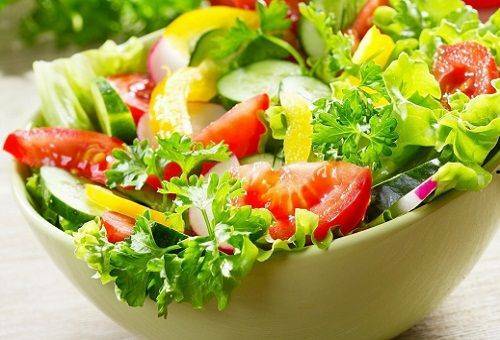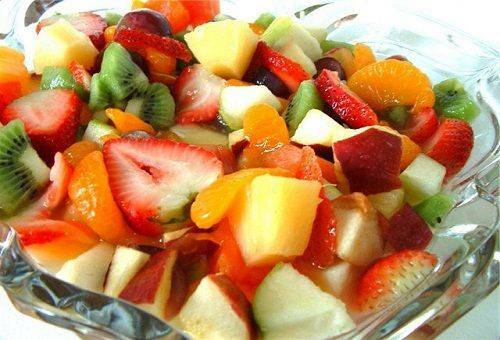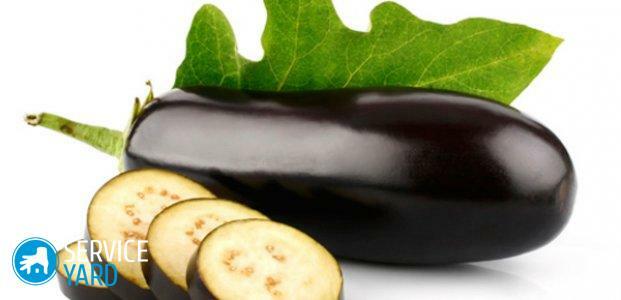Contents:
- How to store salads in the refrigerator - highlights of
- How much and how can you store a salad with mayonnaise, sour cream, olive oil?
- The shelf life of salad from sea kale
- Features of storage of vegetable and fruit salads
The shelf life of ready-made salads is influenced not only by the conditions of the dish, but also the approach to the preliminary processing of ingredients. If the regulations for public catering establishments, the filled mixture of components can be stored, both at room temperature and in the refrigerator, for no more than half an hour, then at home there are a few other indicators in the home.

Regardless of the composition of the dish, the maximum shelf life of the dish does not exceed a day, and if the mixture is seasoned with mayonnaise or another sauce, the bill will go on for hours. The exception is only a salad of sea cabbage, able to maintain its freshness for months and not represent a risk to health.
How to store salads in the refrigerator - the highlights of the
Some housewives consider refrigeration units to be salvation from all problems and fearlessly cut whole baskets of salads or their ingredients, leaving them without refueling. In fact, in dishes such as olivier and herring under the fur coat, as a perishable ingredient, not only mayonnaise, but also eggs, cucumbers, peas, fish. Even potatoes after a few hours darken, and in all components, the rapid multiplication of pathogenic microflora begins.

To reduce the risk of poisoning or indigestion to a minimum, when storing ready-made salads or their constituents in the refrigerator, the following rules must be observed:
- A dish from unprocessed foods or preservatives filled with oil can be put into a glass jar, closed with a lid and put onupper shelf. Then the salad for 2-3 hours will keep its freshness and original appearance. It is also recommended to do with components intended for olivier or herring under a fur coat. Manipulation will prolong the period of freshness and shelf life of components up to 12 hours.
- In summer, it is recommended not to keep salads even in the refrigerator for 6-12 hours. The environmental conditions are such that, although the components do not sour during this time, the activity of pathogenic bacteria will be quite high. This is enough to induce indigestion in a child or an elderly person.
- For storage of components or ready meals in the refrigerator, it is recommended to use glass or plastic utensils. In some cases, you can get by using stainless steel products. Aluminum in this case is not suitable, it reacts with the products, causing them to spoil.
- In the winter months, salads such as mimosa, olivier and herring under the fur coat can lie in the cold for up to 24 hours. The seasoned product is no more than 18 hours.
- Meat and fish dishes, provided that they were not filled with mayonnaise, store no more than 16-18 hours at a temperature of no higher than 4 ° C.
Specialists recommend to give up the habit of keeping the product on the balcony with minus temperature. Such an approach will really prolong the shelf life of the formulation, but it will negatively affect its taste and decorative properties. Juicy components completely freeze, and, thawing, will give a liquid that can ruin the texture and appearance of the mixture.
How much and how can you store a salad with mayonnaise, sour cream, olive oil?
Despite the fact that the average shelf life of salads with different dressings is approximately the same, some points can affect how much and where to keep the product:
- Sour cream, even natural, begins to sour after half an hour at room temperature. In the refrigerator, this period is not greatly increased. For this reason, Olivier, herring under the fur coat, and even fresh vegetables with this ingredient can be filled only after the workpiece has been laid out on plates. Whatever the period of consumption on the product packaging, after opening the container, it is reduced to 6-10 hours, and when you shift the sauce into a new container - up to 3 hours.
- In the case of mayonnaise, the terms slightly increase, but still do not exceed 6 hours. The mass can be stored longer without a risk to health, but its taste is noticeably affected.

Tip: Even professional chefs and nutritionists believe that it is more appropriate to use ready-mixed mayonnaise with preservatives rather than a natural homemade product for dressing salads. This will allow to slightly prolong the storage time of olivier or herring under a fur coat.
- Olive and other unrefined vegetable oils are a good preservative, but not in the case of salads. When reacting with the chemical components of the components, these fillings only accelerate the process of their destruction. Store salads, dressed with vegetable oil based sauces, is generally not recommended. At room temperature, it is best not to keep them longer than 1-2 hours.
To assess the quality of the salad, you need to inspect it, move it to one side of the container. If the appearance, smell and texture have not changed, and the liquid has not appeared liquid, the dish can be tried and served.
The shelf life of salad from sea kale
In the case of salad from sea kale there are no rules, even if it is a ready dish. The main thing is to carefully read the rules of use and the date of manufacture of the product, recommendations on storage temperature. Categorically it is not advisable to buy preservatives, sea cabbage fibers do not need them. Such components not only prolong the shelf life of products, but also neutralize useful components.

A sauerkraut salad, opened or prepared with the use of a dried component, should be consumed within 3 months. In this case, store it better in the refrigerator, at a temperature of 3-4 ° C.The preserved composition should be properly kept at room temperature before opening, and the preserves in the refrigerator. After opening in both cases, a dish of sea kale should be consumed within two days. Storage to the freezer is able to extend this period to 1 month.
Features of storage of vegetable and fruit salads
The least stored salads, made from fresh fruits or vegetables. Ideally, they should be consumed immediately after preparation. Despite this, there are several nuances that will allow to slightly extend the freshness of the components:

- You can cook only from carefully dried components without the slightest signs of moisture. The container for mixing and tools must also be absolutely dry and cool.
- Ingredients such as boiled eggs and various preservatives need to be introduced into the dish in the last turn, immediately before serving. They need to be cut rather large.
- If there is a need to briefly hold the prepared dish, then it is recommended to lay its bottom with a paper towel. The finished composition also needs to be covered with a paper product and slightly pressed against the surface. Then wrap the container with a film and cover it with a lid.
- Refueling can also be prepared in advance, but it will have to be stored in an airtight container.
- If the time of consumption is delayed, then every three hours the container with salad should be checked. Wet towels are changed, the components are mixed.
- In the case of fruits, it is recommended first to lay out each component in a colander to drain excess juice.
- Sliced apples, pears and other ingredients prone to darkening should be sprinkled with citrus juice. This will not only preserve their attractive appearance, but also add a subtle flavor.
- The dish will have a pleasant and clear texture if the constituents( fruits or vegetables) are pre-soaked for a few minutes in ice water.

Compliance with the recommendations for the preparation of fruit and vegetable salads allows you to extend the period of their storage from several hours to 5-7 days without the risk of loss of taste.



